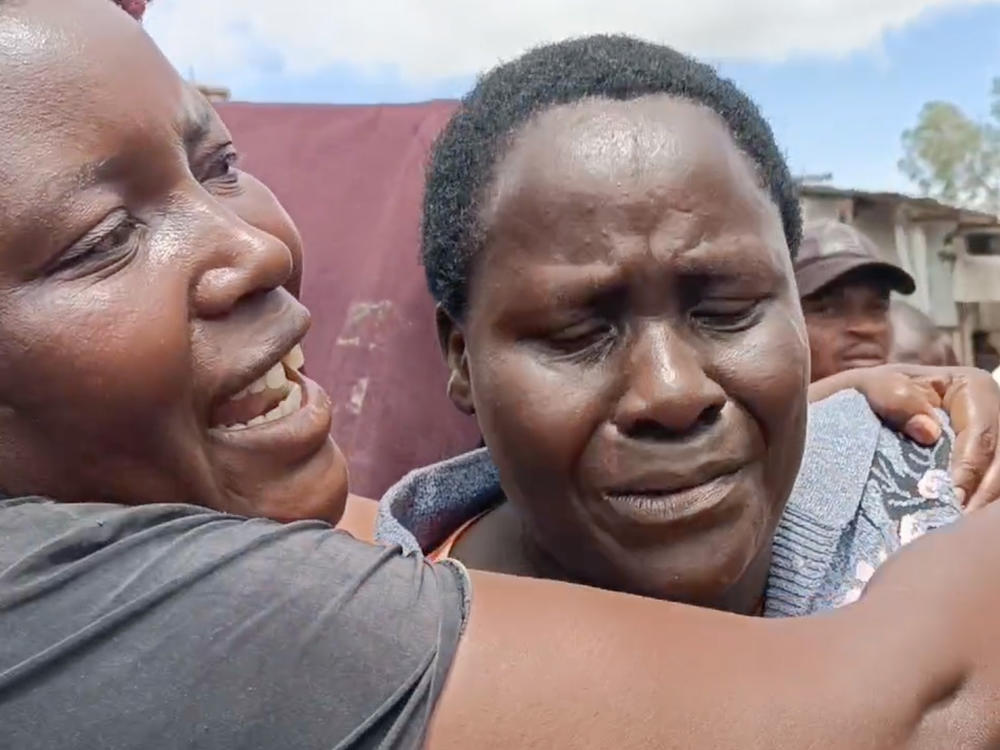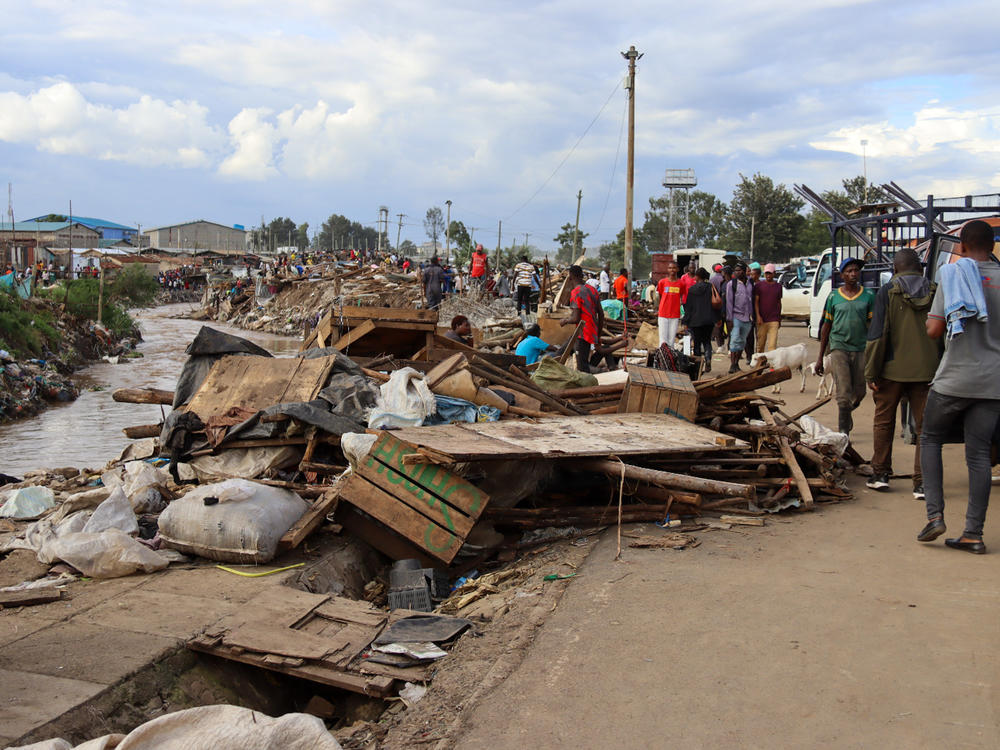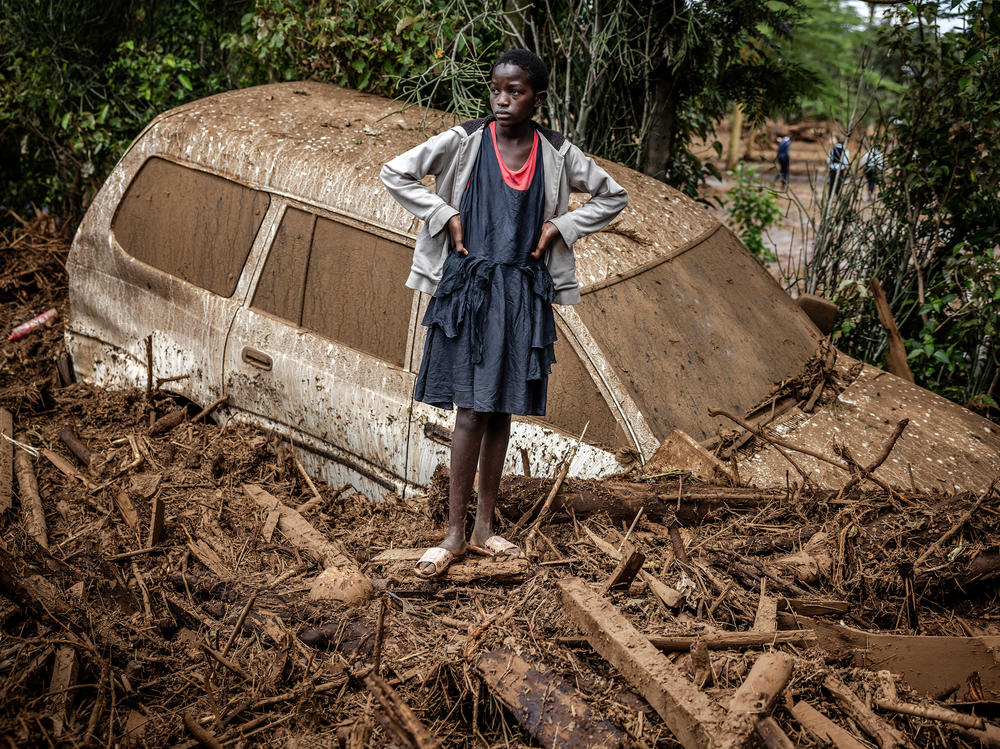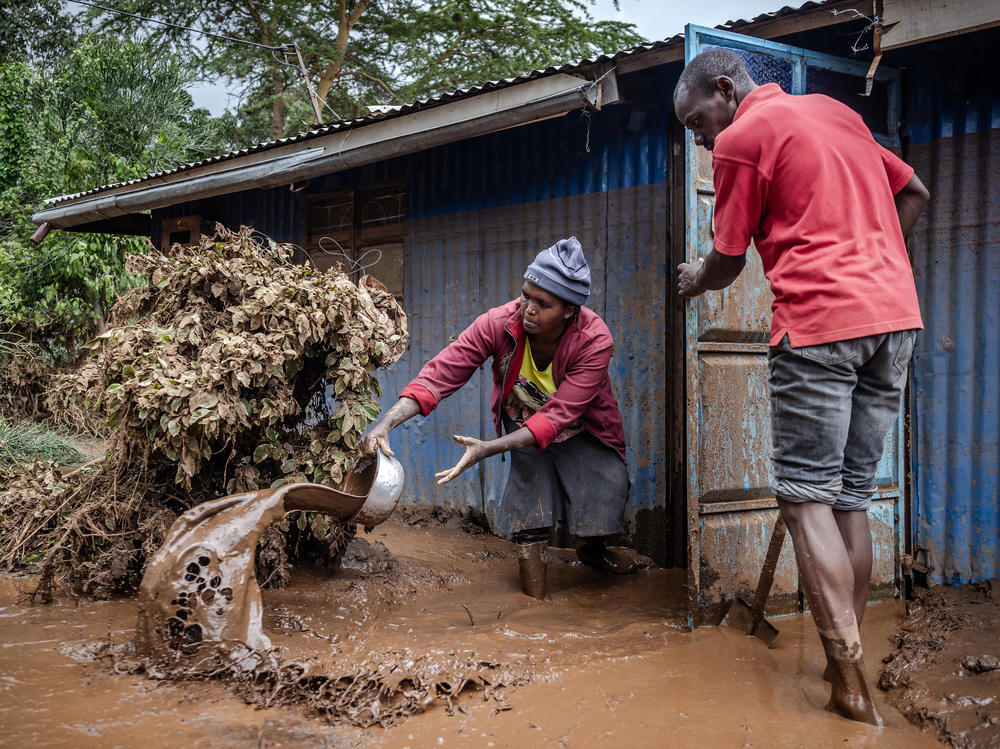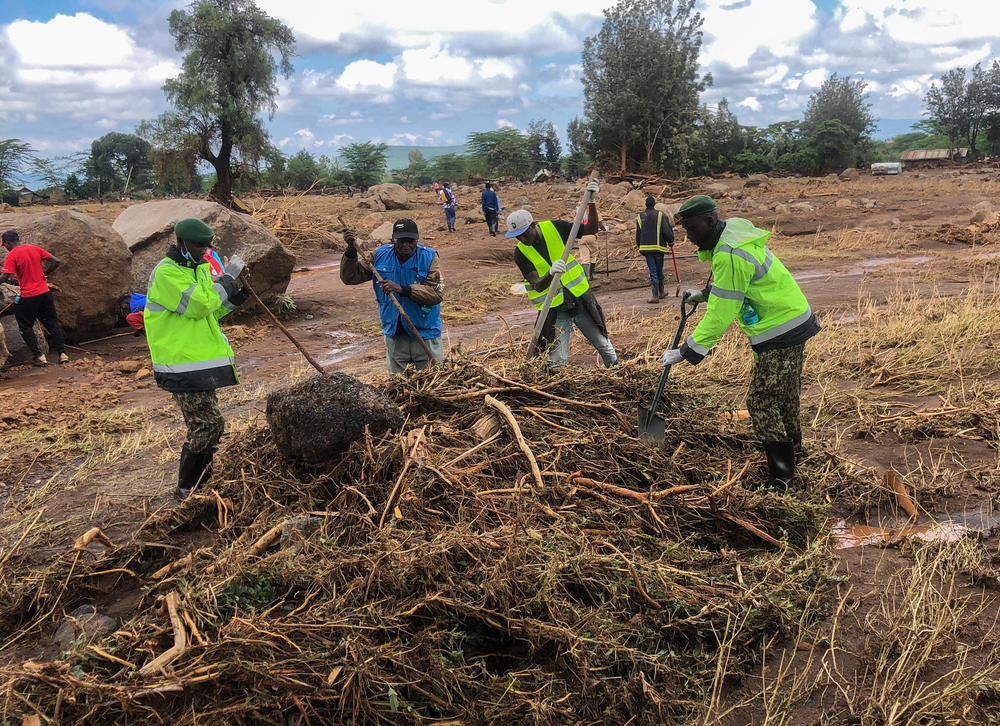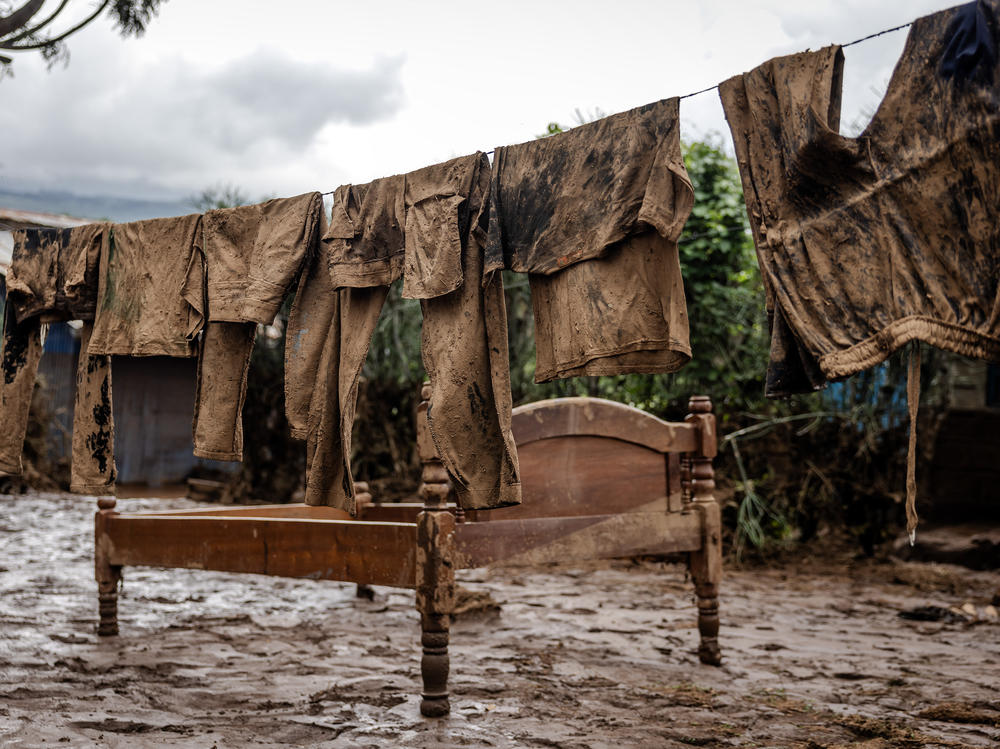Section Branding
Header Content
In Kenya's flooded slums, people mourn their losses and slam their leaders
Primary Content
Though Isabella Mogeni lost everything she owned, she was lucky to survive the heavy storm waters that swept through the Mukuru kwa Reuben slums in Nairobi, Kenya, last week, killing dozens of her neighbors.
But hours after the storms, while Mogeni was out at the market, city authorities demolished her house and hundreds of others that had weathered the deluge.
"They never should have done this to us," Mogeni wails, collapsing to the ground as neighbors try to comfort her amid the din of bulldozers.
For decades, the sprawling corrugated iron shacks and crammed, busy alleys in Mukuru kwa Reuben have been Mogeni's home. Here, in this community of more than a half million people, she raised four children and started a vegetable business.
"I don't know where to go," Mogeni says. "If we had a notice, we would have moved away."
Though Kenya's government had warned people that it would forcefully evacuate anyone living in the settlements along swollen riverbanks and overflowing dams, the demolition of makeshift houses began a day before the 48-hour deadline, catching many people unaware.
The government notes that these homes, many of them illegally constructed, are at high risk of future floods.
Hundreds of displaced families are now sheltering in overcrowded schools, churches and other public buildings, with little food, clean water or proper cover from the heavy rains that continue to pelt the country.
A presidential promise — and a cash handout
Kenya President William Ruto on Monday toured the evacuated slums to offer assurances and promises of new housing for flood victims. He also gave each affected family $76.
Ruto vowed to protect them through relocation. "There will be enough food for them, there will be blankets, there will be mattresses and we are going to look after their children," he said.
But it's not just the demolitions that have angered Kenyans.
Mai Mahiu, an hour north of Nairobi, was once a bustling livestock and vegetable market. But now it is a scene of devastation and mourning.
The road that passes through Mai Mahiu connects the capital to western Kenya, considered the country's breadbasket. It is now completely cut off by a mudslide that occurred when flash floods swept through the area in late April, killing scores of people, including several children.
On one side of the road, boulders, trees and cars are strewn over a large, muddy stretch of land that used to be a village of about 100 people. The debris had been washed downstream, taking everything with it.
Days later, survivors and volunteers were still using their bare hands, sticks and shovels to search for missing neighbors, friends and loved ones.
Peter Njuguna, a village elder, says people are angry at the slow pace and little help they are getting from the government to recover the dead and help survivors.
"We want the government to speed up recovery because we know there many bodies still buried under the rubble. There are children's bodies still here," Njuguna told NPR. "And we also want those who are now homeless to get new homes quickly."
On Thursday, the government said it had earmarked $2 million for the construction of new houses for those affected in Mai Mahiu.
A day of mourning
The announcement came even as rains continued to pound the country, bringing more floods that have hampered rescue efforts. Footage from across Kenya shows stranded people, some of whom are waiting for food to be airlifted to their isolated homes.
As of Thursday, 257 people had been killed and 293,000 others displaced in 31 out of Kenya's 47 counties.
The government declared Friday, May 10, to be a national day of mourning. Ruto encouraged Kenyans to plant trees in remembrance and vowed to tackle climate change, which he blames for the current crisis.
For the wider East Africa region, March to May is usually the long rains season. But this year, countries have received higher than average rainfall due to the El Nino weather phenomenon. Reena Ghelani, United Nations climate crisis coordinator, has been touring affected communities and says much more needs to be done to help the most vulnerable.
"People are coming into this situation of flooding having just survived flooding late last year that affected 5 million people in the region, and before that, drought for five consecutive years," Ghelani says. "It's estimated that by 2030, we could have 10 disasters a week happening because of climate change. These regions are going to face the brunt of the climate crisis first."
These warnings come even as the World Health Organization announced a cholera outbreak in Eastern Kenya, one of the worst areas affected by the flooding. So far, 44 cases have been detected in Tana River County, while doctors diagnosed another 17 patients at an IDP camp in Kilifi, on Kenya's coast north of Mombasa.
"We must be agile and ready to respond, led by government and along with partners to bring relief to hundreds of thousands of of affected people," said Dr. Abdourahmane Diallo, WHO representative in Kenya.
For communities already grappling with the relentless cycle of floods, droughts, food shortages and disease, these challenges compound an already dire situation.
Emmanuel Igunza is a Kenyan freelance reporter who has covered the continent for more than a decade. He has covered topics ranging from arts and culture to climate change to civil wars. He's passionate about journalism as a tool for social development and justice.
